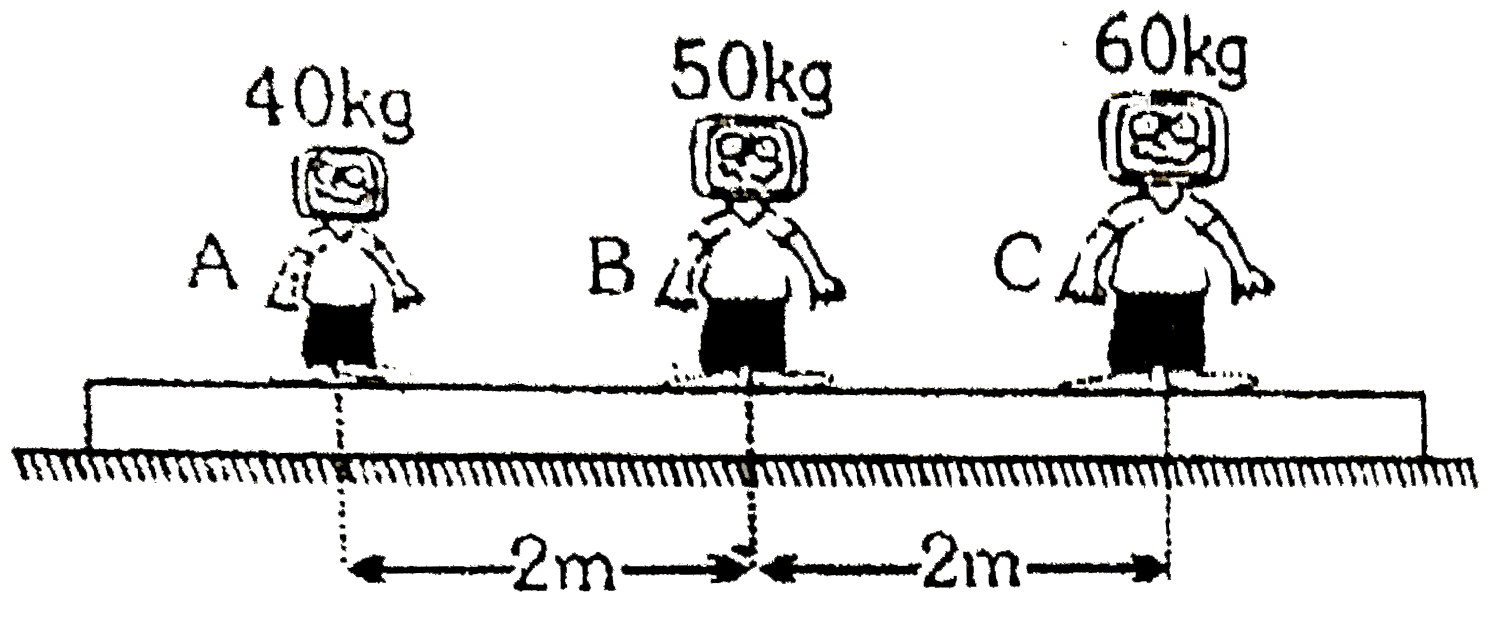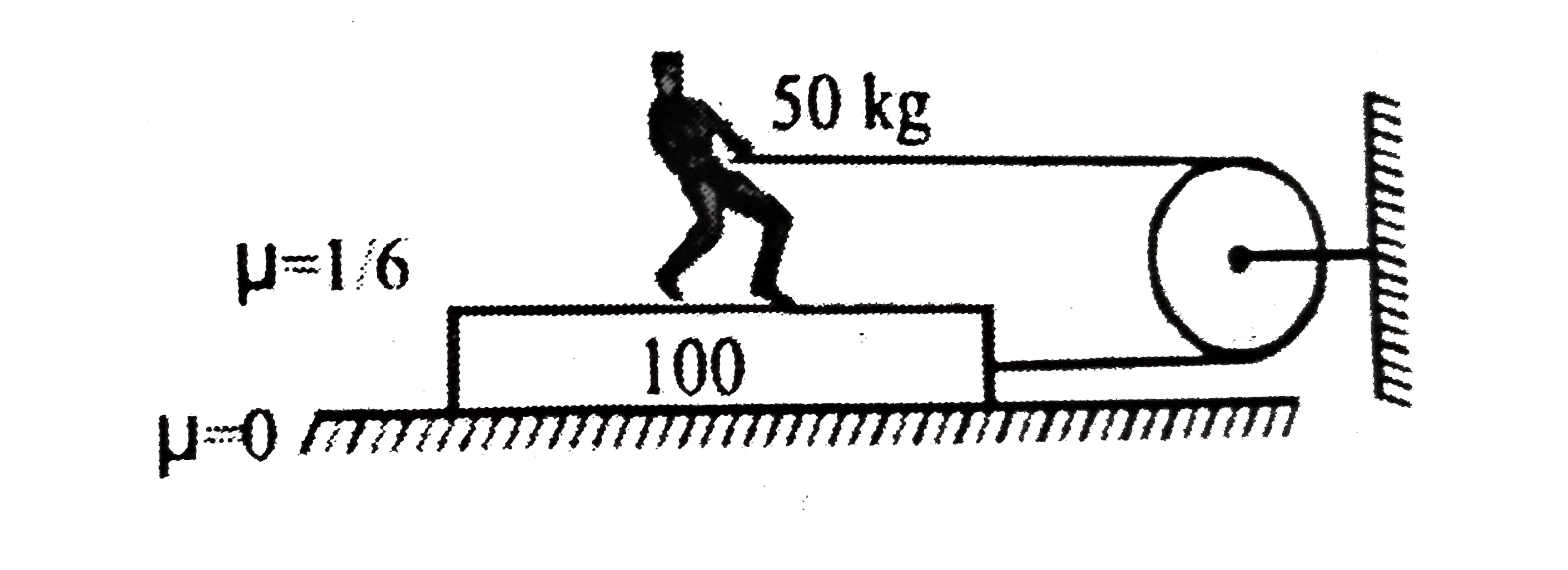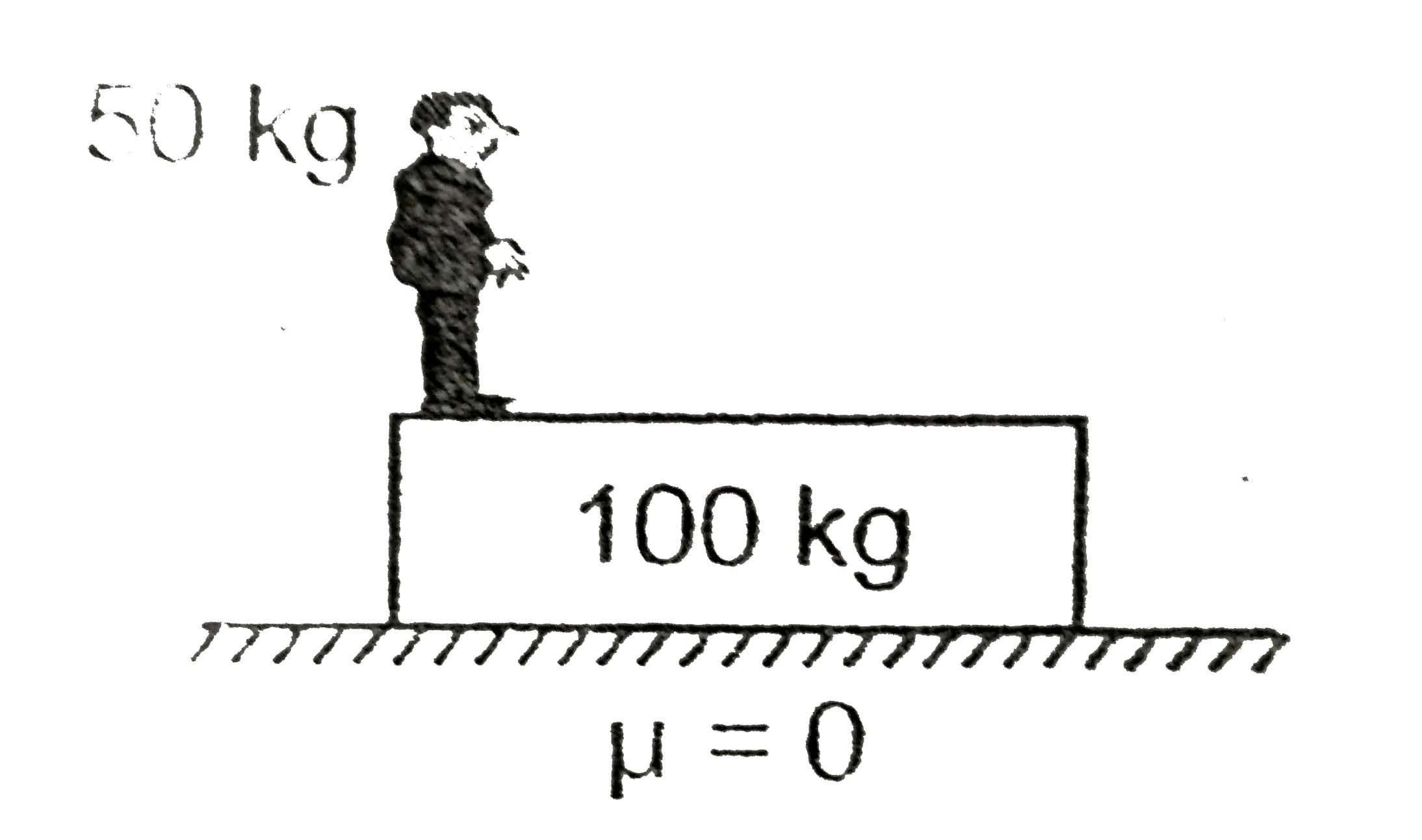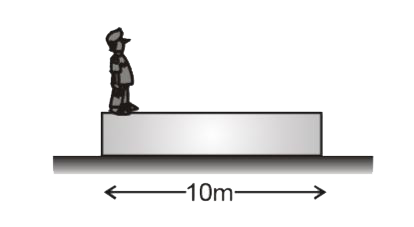Three man A, B & C of mass 40kg,50kg & 60kg are standing on a plank of mass 90kg, which is kept on a smooth horizontal plane. If A & C exchange their position then mass B will shift :-
 Solution in Gujrati
Solution in Gujrati
1/3m towards left
1/3m towards right
will not move w.r.t ground
5/3m towards left
The correct Answer is:B
Let xp=x sift of plank to the right
Δ¯x=mAΔxA+mBΔxB+mCΔcc+mpΔxPmA+mB+mC+mP
0=40(x+4)+50x+60(x−4)+90x40+50+60+90⇒13m
Topper's Solved these Questions
- CENTRE OF MASSBOOK - ALLEN CHAPTER - CENTRE OF MASSEXERCISE - EXERCISE-II
43 Videos
- CENTRE OF MASSBOOK - ALLEN CHAPTER - CENTRE OF MASSEXERCISE - EXERCISE-III
41 Videos
- CENTRE OF MASSBOOK - ALLEN CHAPTER - CENTRE OF MASSEXERCISE - EXERCISE-V B
19 Videos
- BASIC MATHEMATICS USED IN PHYSICS &VECTORS BOOK - ALLEN CHAPTER - BASIC MATHEMATICS USED IN PHYSICS &VECTORS EXERCISE - EXERCISE-IV ASSERTION & REASON
11 Videos
- ELASTICITY, SURFACE TENSION AND FLUID MECHANICSBOOK - ALLEN CHAPTER - ELASTICITY, SURFACE TENSION AND FLUID MECHANICSEXERCISE - Exercise 5 B (Integer Type Questions)
3 Videos
Similar Questions
Two particle A and B start moving due to their mutual interaction only. If at any tiem 't', →aA and →aB are their respective accelerations, →vA and →vB are their respective velocities, and upto that time WA and WB are the work done on A and B respectively by the mutual force, mA and mB are their masses respectively, then which of the following is alwys correct.
View SolutionA particle of mass m, kinetic energy K and momentum p collision head on elastically with another particle of mass 2m at rest. After collision. :
Column IColumn II(A)Momentum of first particle(p)3/4p(B)Momentum of second particle(q)−K/9(C)Kinetic energy of first particle(r)−p/3(D)Kinetic energy of second particle(s)8K9None
View SolutionTwo particles of masses m1 and m2 in projectile motion have velocities →v1 and →v2 , respectively , at time t=0. They collide at time t0. Their velocities become →v'1 and →v'2 at time 2t0 while still moving in air. The value of ∣∣∣(m1→v'1+m2→v'2)−(m1→v1+m2→v2)∣∣∣
View SolutionAssertion: If the initial and final positions coincide, the displacement is a null vector.
Reason: A physical quantity can not be called a vector, if its magnitude is zero.
View SolutionTwo soap bubbles A and B are kept in a closed chamber where the air is maintained at pressure 8N/m2.The radii of bubbles A and B are 2cm and 4cm, respectively. Surface tension of the soap-water used to make bubbles is 0.04N/m. Find tha ratio nB/nA, where nA and nB are the number of moles of air in bubbles A and B, respectively. [Neglect the effect of gravity.]
View SolutionA man of mass 80kg stands on a plank of mass 40kg. The plank is lying on a smooth horizontal floor. Initianlly both are at rest. The man starts walking on the plank towards north and stops after moving a distance of 6m on the plank. Then
View SolutionA man of mass 50 kg is pulling on a plank of mass 100 kg kept on a smooth floor as shown with force of 100 N. If both man & plank move together, find force of friction acting on man.

View SolutionA man of mass 50kg us standing on a 100kg plank kept on a fricitonless horizontal floor. Initially both are at rest. If the man starts walking on the plank with speed 6m/s towards right relative to the plank, then amount of muscle energy spent by the man is

View Solution60 kg द्रव्यमान वाला एक मनुष्य एक 40 kg के मनुष्य को 80 N के बल से धक्का देता है, तो 40 kg का मनुष्य 60 kg वाले मनुष्य को उसी समय कितने बल से धक्का दे रहा है ?
View SolutionA wooden plank of mass 20 kg is resting on a smooth horizontal floor. A man of mass 60 kg starts moving from one end of the plank to the other end. The length of the plank is 10 m. Find the displacement of the plank over the floor when the man reaches the other end of the plank.

View Solution60 किग्रा द्रव्यमान वाला एक व्यक्ति 40 किग्रा द्रव्यमान वाले दूसरे व्यक्ति को 60 न्यूटन बल से धक्का देता है | 40 किग्रा द्रव्यमान वाले व्यक्ति द्वारा 60 किग्रा द्रव्यमान वाले व्यक्ति पर लगा बल होगा :
View SolutionOn a 90-kg board, three men A, B and C, whose mass is 40 kg, 50 kg and 60 kg respectively, are placed on a horizontal surface without friction. If A and C change their positions then Adam B will change his position.
View SolutionA wooden plank of mass 20 kg is at rest on a smooth horizontal floor. A man of mass 60 kg starts moving from one end of the plank to the other end. The length of the plank is 10 m. Find the displacement of the plank over (he floor when the man reaches the other end of the plank
View SolutionA person of mass 40 kg standing on a smooth horizontal plane of ice throws a body of mass 10 kg with a velocity 8ms−1. Then the total kinetic energy of person and body is
View SolutionA box of 50 kg is lifted by a man of mass 60 kg to a height of 50 m. Calculate the work done by the man.
View SolutionA man of mass 50kg us standing on a 100kg plank kept on a fricitonless horizontal floor. Initially both are at rest. If the man starts walking on the plank with speed 6m/s towards right relative to the plank, then amount of muscle energy spent by the man is

View Solution
